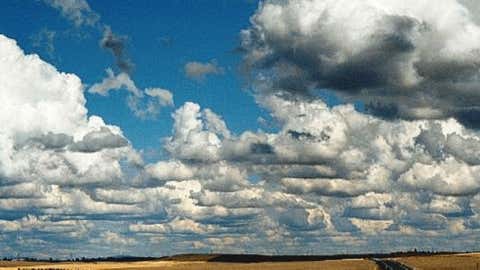
When you read your local weather forecast on weather.com, quite frequently you'll see terms like partly cloudy, partly sunny and mostly cloudy used. But do you know what those terms really mean?
Here's a quick rundown that'll give you a little more background on a few commonly used weather terms.
Sky Cover
For starters, partly sunny can only be used during the day. However, according to the National Weather Service, partly cloudy and partly sunny mean exactly the same thing.
The NWS definition states that between 3/8 and 5/8 of the sky is covered by clouds when it's classified as partly cloudy or partly sunny. Sometimes, a "mix of sun and clouds" is used by some forecasters instead of "partly sunny" during the daytime hours, though it is not an official NWS term.
As you may have guessed by now, mostly cloudy means there are more clouds than sun (or stars, at night). The NWS definition says the sky is classified as mostly cloudy when 3/4 to 7/8 of the sky is covered by clouds, and it can also be referred to as "considerable cloudiness."
On the other hand, mostly sunny means there is more sun than clouds. When 1/8 to 1/4 of the sky is covered by clouds, it's classified as mostly sunny, or mostly clear at night, according to the NWS.
Sunny or clear means there are no clouds in the sky, and cloudy means the entire sky is covered by clouds.
One of the most misused weather terms is "fair." The NWS uses "fair," typically at night, to describe less than 3/8 cloud cover, with no precipitation and no extremes of visibility, temperature or winds. It describes generally pleasant weather conditions.
Probability of Precipitation (PoP)
Everyone has seen the chance of rain or snow in a weather forecast, but what exactly does a 40-percent chance of precipitation mean?
According to the NWS, the probability of precipitation (PoP) describes the chance of precipitation occurring at any point in the forecast area, which means the correct way to interpret the forecast is that there's a 40 percent chance rain will occur at any given point in the area.
PoP also incorporates the forecaster's confidence that it will rain or stay dry at a given location, so anything above a 50 percent chance of rain means there is higher confidence that it will rain rather than not. Less than a 50 percent chance of rain means there is higher confidence that it won't rain.
PoP does not depict the duration or intensity of the rain. In other words, a 100 percent chance of rain does not mean it will rain all day, nor will it necessarily downpour the entire time.
Visibility
Other than precipitation, the three main things that can inhibit visibility are fog, mist and haze. The international definition of fog is a visibility of less than 0.62 miles, or 1 kilometer.
Mist is a visibility of between 0.62 and 1.2 miles (1 to 2 kilometers), while haze is a visibility from 1.2 to 3.1 miles (2 to 5 kilometers).
Aside from the visibility categorization, fog and haze form in a totally different way. Mist and fog are caused by water droplets in the air, and the only difference is visibility, as discussed above. On the other hand, haze is the reflection of sunlight off air pollution, typically found on hot and humid summer days.
Note that mist is not the same thing as drizzle or light rain. Drizzle is precipitation consisting of numerous tiny droplets of water less than 0.02 inches in diameter. Light rain is simply rain falling at a rate of 0.1 inches or less per hour. Both drizzle and light rain fall to the ground, unlike mist and fog, which remain in the air close to the ground.
Any Others?
Feel free to reach out to us on Facebook or Twitter if there are other weather terms you think you're using incorrectly.
MORE ON WEATHER.COM: Cumulus Clouds




